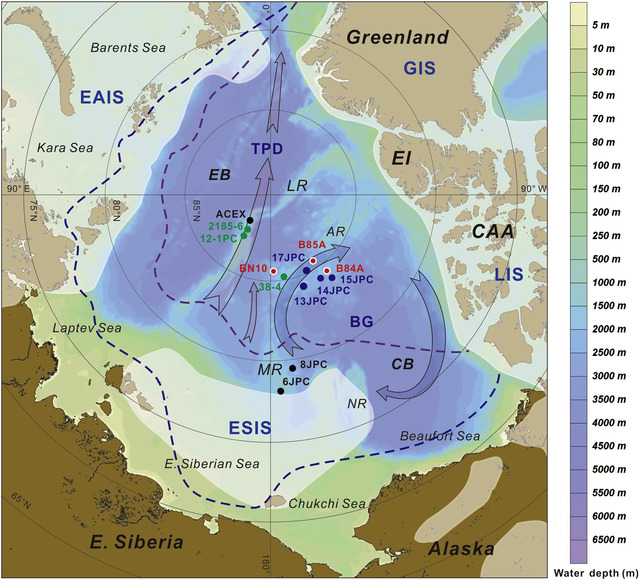Rujian Wanga,Leonid Polyakb,Wenshen Xiaoa,Li Wua,Taoliang Zhanga,Yechen Suna,Xiaomei Xuc
a State Key Laboratory of Marine Geology, Tongji University, Shanghai 200092, China
b Byrd Polar and Climate Research Center, The Ohio State University, Columbus, OH 43210, USA
c Earth System Science, University of California, Irvine, CA 92697-3100, USA
Abstract:
We use sediment cores collected by the Chinese National Arctic Research Expeditions from the Alpha Ridge to advance Quaternary stratigraphy and paleoceanographic reconstructions for the Arctic Ocean. Our cores show a good litho/biostratigraphic correlation to sedimentary records developed earlier for the central Arctic Ocean, suggesting a recovered stratigraphic range of ca. 0.6 Ma, suitable for paleoclimatic studies on orbital time scales. This stratigraphy was tested by correlating the stacked Alpha Ridge record of bulk XRF manganese, calcium and zirconium (Mn, Ca, Zr), to global stable-isotope (LR04-δ18O) and sea level stacks and tuning to orbital parameters. Correlation results corroborate the applicability of presumed climate/sea-level controlled Mn variations in the Arctic Ocean for orbital tuning. This approach enables better understanding of the global and orbital controls on the Arctic climate. Orbital tuning experiments for our records indicate strong eccentricity (100-kyr) and precession (~20-kyr) controls on the Arctic Ocean, probably implemented via glaciations and sea ice. Provenance proxies like Ca and Zr are shown to be unsuitable as orbital tuning tools, but useful as indicators of glacial/deglacial processes and circulation patterns in the Arctic Ocean. Their variations suggest an overall long-term persistence of the Beaufort Gyre circulation in the Alpha Ridge region. Some glacial intervals, e.g., MIS 6 and 4/3, are predominated by material presumably transported by the Transpolar Drift. These circulation shifts likely indicate major changes in the Arctic climatic regime, which yet need to be investigated. Overall, our results demonstrate applicability of XRF data to paleoclimatic studies of the Arctic Ocean.
Full article:https://doi.org/10.1016/j.quascirev.2017.12.006




